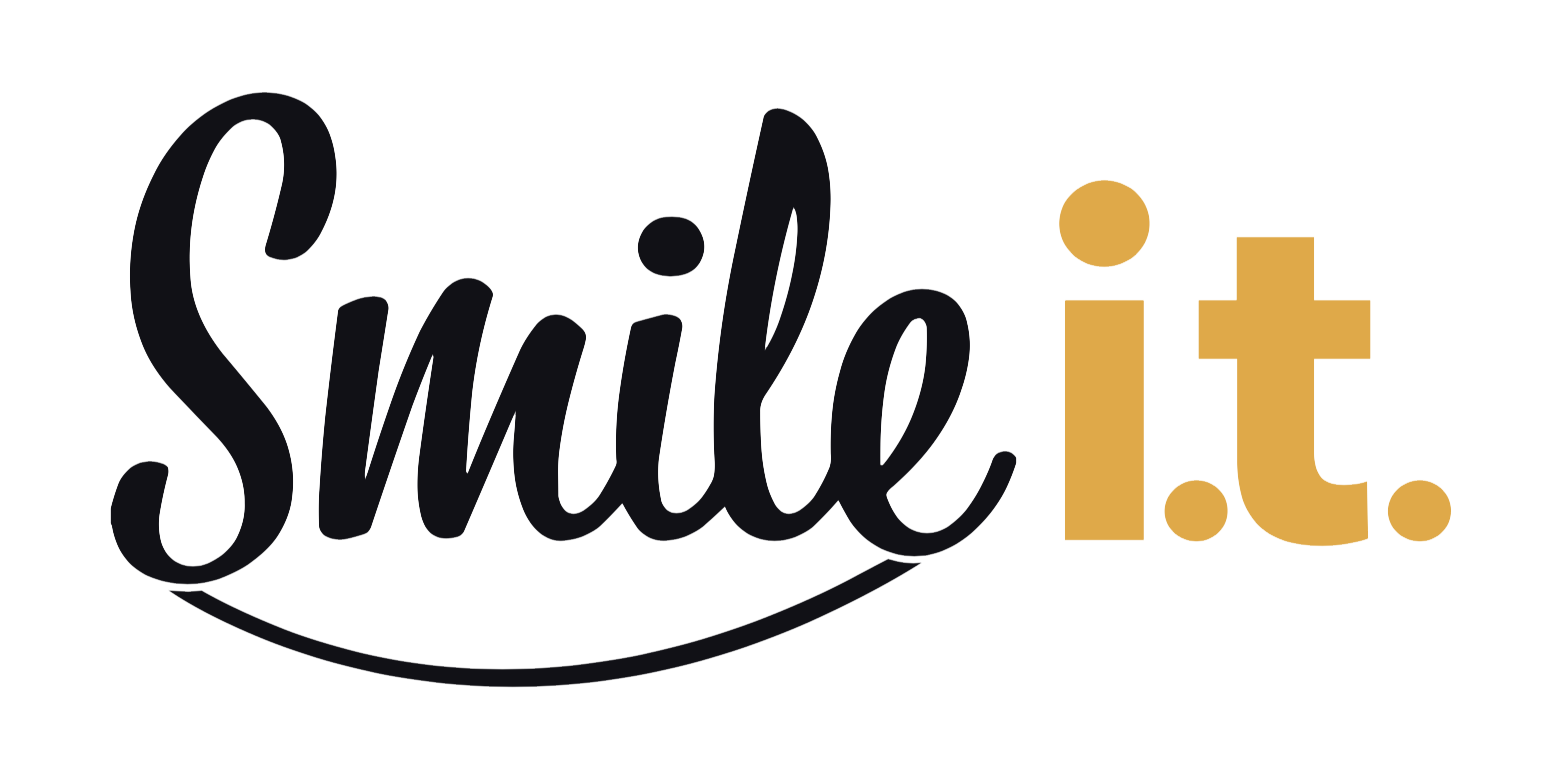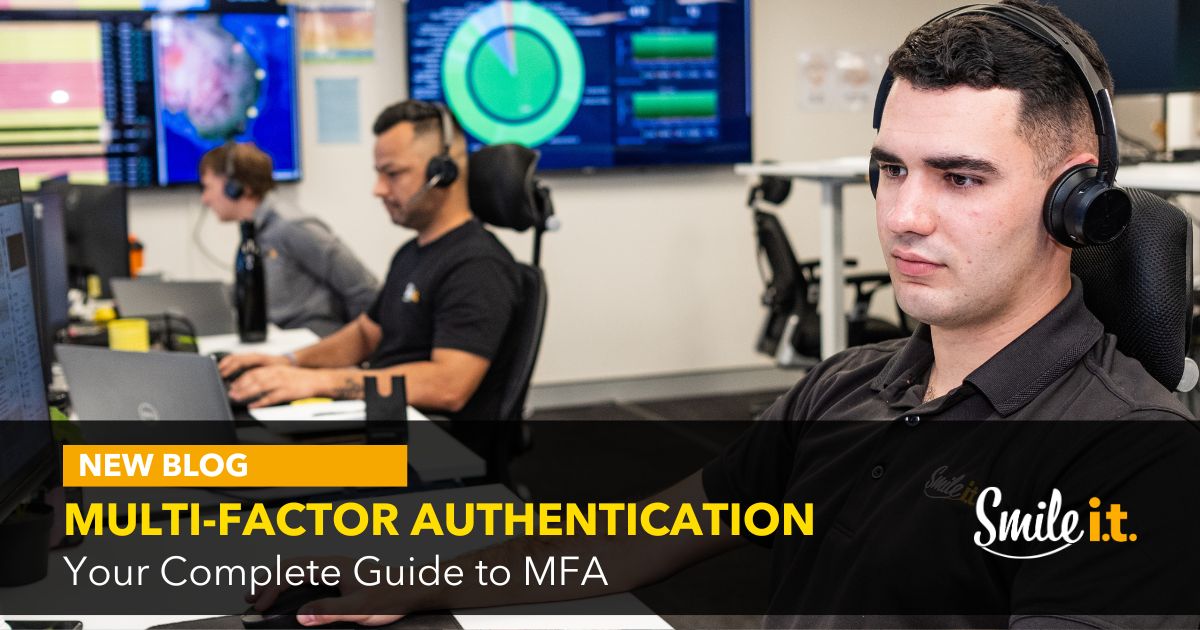Cybersecurity has become a cornerstone of the IT strategy of most businesses around the world. Large amounts of time and resources are dedicated to keeping networks, systems and data safe from the cunning hackers out there, whose methods are getting sharper by the day.
One of the simplest and most effective means of locking down an account is to use Multi-Factor Authentication (MFA). Recommended by the Australian Cyber Security Centre as one of their ‘Essential Eight’ mitigation strategies, it’s a powerful means of protecting sensitive information that all businesses should consider implementing. According to Microsoft, MFA can thwart over 99.9% of account compromise attacks.
Today we’re going to guide you through what MFA is and how it works, paying attention to the different types of authentication methods you could use. Let’s start by defining MFA.
What is MFA?
Multi-factor authentication is a security process that only grants access to a system, account, or application if the user satisfies two or more verification factors.
If you only need a password to log in, that’s single-factor authentication and a hacker only needs one piece of information to compromise your account. MFA adds extra layers of protection, so even if the password is compromised it prevents unauthorised access from happening.
Keep reading to find out what verification methods you can use in MFA, but before that let’s look at why MFA is so important.
Why is MFA Important?

MFA adds an extra layer of security, making it extremely difficult for a hacker to gain access, even if they have managed to figure out a password. It can also be effective in preventing against phishing, brute force attacks and credential stuffing!
How Does MFA Work?
Each time you log into a system or application with MFA enabled, you’ll need to provide two or more authentication methods. These typically fall into three categories:
- Something You Know:
This refers to passwords, PINs, or answers to security questions. They’re common and can be easily guessed or compromised, meaning they’re not particularly secure.
- Something You Have:
This uses something in your possession like a smartphone, security token, or hardware key. Because it relies on physical possession of the device, it’s very difficult for a hacker to access it.
- Something You Are:
These are biometric-based, relying on physical traits like fingerprints, facial recognition, or retina scans. It’s tough to replicate biometrics, so they’re often used in highly sensitive environments.
Let’s look at an example: you log into your email account with your password, which is ‘something you know’. You’re then required to input a code generated by the authenticator app on your phone, which is ‘something you have’. Only then can you log in. That extra layer of security gives your email account rock-solid resistance to cybercriminals.
Let’s take a look at some more examples of MFA methods.
Examples of MFA Methods
Different accounts or apps will have their preferred methods of using MFA to log in. Here are some you may encounter:
- SMS Verification:
A code sent via text message to your phone is used to complete a login process. This is convenient, although vulnerable to SIM-swapping attacks where hackers take control of your phone number.
- Authenticator Apps:
Apps like Google Authenticator or Microsoft Authenticator generate time-sensitive codes you enter to complete a login process, as in the above example. Each code is only valid for a short period of time, which further improves security.
- Biometrics:
Fingerprints, facial recognition, and retina scans are common MFA factors, with smartphones and laptops now being able to come with built-in biometric scanners. It’s a quick and easy authentication method that hackers can’t replicate.
- Security Keys:
A security key is a small physical device you plug into your computer to verify your identity. Usually USB-based, the keys can’t be phished. They’re a robust option when it comes to protecting sensitive information for both businesses and individuals.
- Push Notifications:
When you try login, a push notification is sent to your mobile phone. Asking you to deny or approve the request. This is fast and user-friendly, so its popular in apps that you log into frequently.
What Accounts Need MFA?

– Workplace and Corporate: MFA is absolutely essential in businesses today. Your daily collaboration, communication and cloud storage, as well as client data, needs to be protected.
– Email: You need to lock down an email account because it’s often used to change the passwords of other accounts.
– Banking and Finance: This is a no-brainer- valuable financial data requires the utmost in security.
– Social Media: Business and personal data can be at risk and leveraged against you if hackers gain access to your social media accounts.
– Online Shopping Accounts: These usually store financial information which MFA will prevent from falling into the wrong hands.
Want to Boost Your Cyber Security?
Cyber security is an ever-evolving game, but if you get the fundamentals in place and stick to them, you will be ahead of the pack. MFA should absolutely be one of those fundamentals in your business approach to cyber security – the extra layer of protection it adds is a big deterrent that stops hackers in their tracks.
If you’re serious about safeguarding your accounts, you need to get serious about implementing MFA. Smile IT has a team of cyber security experts who will guide you to hugely improved cyber defences. Get in touch today with your questions, we’re here to help right now!
When he’s not writing tech articles or turning IT startups into established and consistent managed service providers, Peter Drummond can be found kitesurfing on the Gold Coast or hanging out with his family!


